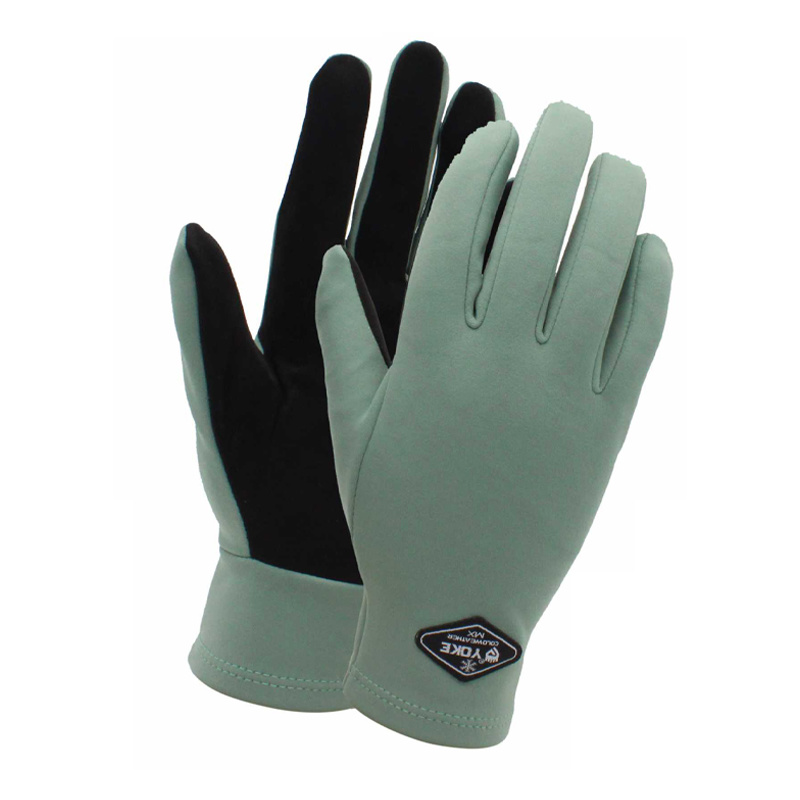The Science Behind the Design of Fingerless Impact Gloves: A Comprehensive Guide
Release time:
2025-06-15
The Science Behind the Design of Fingerless Impact Gloves Introduction to Fingerless Impact Gloves Fingerless impact gloves have gained immense popularity in various industries, from construction to sports. Their design caters to the need for dexterity while providing protection against impacts and abrasions. This article delves into the science and engineering that underpin the development of the
The Science Behind the Design of Fingerless Impact Gloves
Introduction to Fingerless Impact Gloves
Fingerless impact gloves have gained immense popularity in various industries, from construction to sports. Their design caters to the need for dexterity while providing protection against impacts and abrasions. This article delves into the science and engineering that underpin the development of these gloves, focusing on their materials, structure, and functionality.
The Importance of Hand Protection in Various Industries
In many work environments, hand injuries are commonplace. Whether in construction, manufacturing, or even recreational activities, protecting the hands from cuts, abrasions, and impacts is crucial. Fingerless impact gloves offer a unique solution by balancing protection with manual dexterity. By allowing fingers to remain exposed, these gloves enable users to perform intricate tasks with ease.
Understanding Impact Protection
Impact protection is a key feature of fingerless impact gloves. These gloves typically incorporate specialized padding or reinforced materials that absorb shock and reduce the risk of injury from heavy objects or sudden impacts. The science behind these protective measures involves advanced materials and engineering techniques that enhance safety without compromising comfort or flexibility.
Materials Used in Fingerless Impact Gloves
High-Density Foam and Gel Inserts
Most fingerless impact gloves utilize high-density foam or gel inserts to absorb shock. These materials are strategically placed in the palms and knuckles to provide maximum protection during impact. High-density foam is lightweight yet offers excellent cushioning, while gel inserts conform to the hand's shape, allowing for enhanced comfort and fit.
Durable Outer Shells
The outer shell of fingerless impact gloves is made from durable materials such as synthetic leather, nylon, or Kevlar. These materials are chosen for their resistance to abrasions and tears. They not only protect against external hazards but also contribute to the overall longevity of the gloves.
Breathable Linings
Comfort is paramount when it comes to work gloves. The interior linings of fingerless impact gloves are often made from breathable fabrics that wick moisture away from the skin. This feature helps to keep hands dry and comfortable during extended use, reducing the risk of blisters and irritation.
Ergonomic Design Features
Pre-Curved Fingers and Flexibility
An essential aspect of fingerless impact gloves is their ergonomic design. Many gloves feature pre-curved fingers, allowing for a natural grip while holding tools or equipment. This pre-curvature minimizes hand fatigue and enhances finger mobility, making it easier to perform tasks that require precision.
Adjustable Closures and Fit
Fingerless impact gloves often come with adjustable closures, such as Velcro straps or elastic wristbands. These closures customize the fit, ensuring that the gloves remain securely in place during use. A snug fit is critical for maintaining dexterity and preventing slippage, which can lead to accidents.
Advanced Technologies in Fingerless Impact Gloves
Smart Fabric Integration
The integration of smart fabrics into fingerless impact gloves is an emerging trend. These fabrics can monitor temperature, moisture levels, and even biometric data. Such technology enhances the gloves' functionality by providing users with real-time feedback about their hand conditions, ensuring optimal performance.
Enhanced Grip Technologies
Grip is a crucial factor when selecting gloves for any task. Many fingerless impact gloves are designed with specialized grip technologies that enhance traction. These may include textured palm materials or rubberized surfaces that provide a secure hold on tools and machinery, reducing the likelihood of slips and drops.
Applications of Fingerless Impact Gloves
Construction and Heavy Industry
In construction, fingerless impact gloves offer vital protection against falling objects and sharp edges. Their design allows workers to handle tools and materials effectively while minimizing the risk of injury.
Sports and Recreation
Many athletes also opt for fingerless impact gloves in sports like cycling, weightlifting, and climbing. These gloves provide necessary palm protection without restricting finger movement, allowing for better grip on equipment.
Motorcycling and Automotive Work
Motorcyclists often choose fingerless gloves for both comfort and safety. The design allows for better handling of the bike's controls while maintaining protection against abrasions in case of a fall.
Choosing the Right Fingerless Impact Gloves
Assessing Your Needs
When selecting fingerless impact gloves, consider the specific tasks you will be performing. Different industries have unique requirements, so understanding your needs will help you choose the right pair.
Evaluating Fit and Comfort
Trying on gloves is essential to evaluate fit and comfort. Ensure the gloves are not too tight or too loose, as this can affect dexterity. Pay attention to the quality of the materials and the comfort level, especially in the palm and finger areas.
Care and Maintenance of Fingerless Impact Gloves
Cleaning and Storage
Proper care can extend the lifespan of your fingerless impact gloves. Most gloves can be hand-washed with mild soap and air-dried. Avoid using a washing machine or dryer, as this can damage the materials.
Regular Inspections
Regularly inspect your gloves for signs of wear and tear. Look for frayed seams, worn-out padding, or degraded materials. Ensuring your gloves are in good condition is vital for maintaining hand protection.
Frequently Asked Questions (FAQs)
1. What are fingerless impact gloves used for?
Fingerless impact gloves are designed for various applications, including construction, sports, and automotive work. They provide hand protection while allowing for maximum dexterity.
2. How do I choose the right size for fingerless impact gloves?
To find the right size, measure the circumference of your hand just below the knuckles. Compare this measurement with the manufacturer’s sizing chart to ensure a proper fit.
3. Are fingerless impact gloves machine washable?
It is generally recommended to hand-wash fingerless impact gloves with mild soap and air-dry them to preserve their integrity.
4. Can I use fingerless impact gloves for outdoor activities?
Yes, fingerless impact gloves are suitable for various outdoor activities, including hiking, cycling, and climbing, as they provide protection while maintaining grip and flexibility.
5. How often should I replace my fingerless impact gloves?
Replace your fingerless impact gloves when they show signs of significant wear, such as frayed seams, loss of padding, or reduced grip effectiveness. Regular inspections can help you determine when it's time for a new pair.
Conclusion
Fingerless impact gloves are an essential piece of equipment across various industries, balancing safety with dexterity. Their innovative design incorporates advanced materials and technologies to provide users with the protection they need without sacrificing performance. By understanding the science behind their design, users can make informed choices that enhance their safety and efficiency in their respective fields. Whether for work or play, these gloves are a practical solution for anyone seeking reliable hand protection.
Key words:
Mechanical gloves Safety gloves Work gloves





